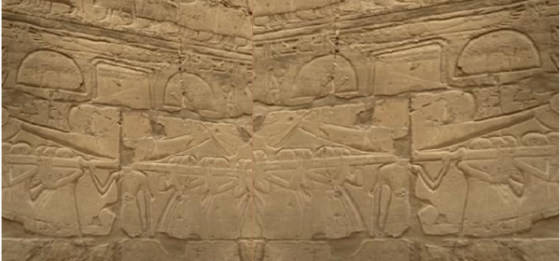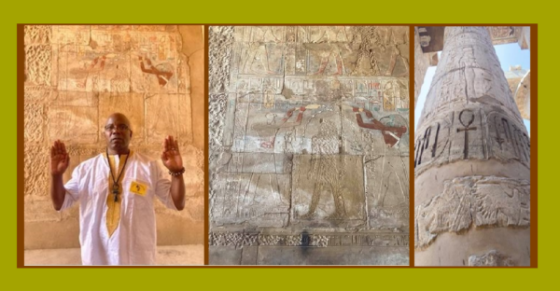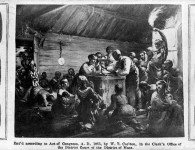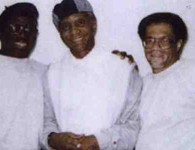Editor: Victor Trammell
Photo credits: ASCAC
Hotep (Medu Neter for Peace),
Ankh, Udja, Seneb (Medu Neter for Life, Prosperity, Heath)!!!
May this message find you in the best of spirits!
The 2021 Kemet Nu Educational Tour is sponsored by professors Ashra and Merira Kwesi -the legendary teachers of Egyptology (the scientific study on Egyptian history, culture, and spirituality).
On Day 5 of our field studies and lectures, we concluded our mission with a visit to Ipet Isut (Europeans and Arabs call it Karnak). Ipet Isut s also the site of the holiest temple of ancient Kemet. Ancient Afrikan Kemetic people (ancient Egyptians) spirituality taught that AmenRa descended to earth in the ark of the covenant.
View photos below, which were taken on Day 5 of the tour

AmenRa is Medu Neter for the oldest name for the one God of the universe. AmenRa means spiritually the hidden one, but Afrikan Kemetic people taught that Amen can be seen physically every day as the sun. They call that Ra. Our ancestors in Kemet taught that the creator is AmenRa. In the Medu Neter AmenRa’s color is Black. In fact, all Kemetic people, and our ancestral Neteru deities, are portrayed as Black in color. Afrikan Kemetic people’s theology based their belief system upon AmenRa manifesting the spirit in 19 Neteru. The world’s major religions (i.e., Judaism, Christianity, and Al-Islam) pays homage to AmenRa by saying Amen at the end of their prayers. Visiting Ipet Isut is a great privilege to study the wisdom of our Afrikan ancestors. The world has copied the culture and spirituality of Kemet to place their civilizations on the roadmap for human progress.
The Medu Neter’s Translations, Significance, and Cultural Interpretations (view photo below)

Unfortunately, over the centuries, invaders have come to Kemet–raping the treasures and resources of Afrika. For Afrikan-centered educators like the Kwesis, they teach all people the importance of showing respect to our great ancestors of Kemet. They educate on the precautions about entering Ipet Isut. Out of respect for our Afrikan ancestors and their spiritual traditions, Professors Ashra Kweisi, and his wife MeriRa, instructed us to wear all white like the Medu Neter instructed our Afrikan Kemetic ancestors thousand years ago. And we did. However, they also directed us to respect the Ankh Manu by not entering its chambers. The Ankh Manu is a special room located inside Ipet Isut. It represents AmenRa coming out of the heavens down to earth. It is symbolized as a huge concrete box in a room. This room is called the holiest of holies-Ankh Manu. In ancient Afrikan Kemetic times, only the high priests (the Khairy Neb) were allowed to enter the Ankh Manu.
The way you physically and symbolically glorify AmenRa is by raising your hands and arms. This is taught by our Afrikan Kemetic ancestors in the Medu Neter for thousands of years. Many of the world’s religions have incorporated the raising the hands to honor AmenRa into their rituals. The Christians raised hands their hands in the Amen-Ra position to honor God during church service and in prayers. Muslims raise their hands in the AmenRa position during times of prayer (In Arabic it is called salaat) and when the Adhan (Arabic for the calling of the Muslims to prayer).
The Roots of All Modern Faiths, Their Commandments, and Prayer Rituals for Salvation (more photos below)

At Ipet Isut, the reverence for God and spirituality is prevalent and written everywhere. The Medu Neter shows the world that Afrikan Kemetic people pioneered the belief in monotheism, pioneered the belief in the existence of God, pioneered fasting, pioneered baptism, and pioneered ablution. This Afrikan Kemetic faith tradition existed before Judaism, Christianity, Al-Islam, Hinduism, and Buddhism. However, Afrikan Kemetic faith tradition is the root origin for all of the world’s major religions.
But they also pioneered the belief in salvation and resurrection.
At Ipet Isut, Afrikan Kemetic people consistently remind the world that the souls of humanity can be saved and resurrected. In the temple, a huge Tekenu architectural design (created by Black people), which is called “the obelisk” by Europeans and Arabs, also fills the site. Unfortunately, when Europeans invaded Kemet, they stole many Tekenu. The European invaders took Kemet’s Tekenu artifacts as souvenirs and claimed them as their property. But more importantly, they took them because of the Tekenu’s symbolism, which founded all concepts of salvation and resurrection. Proof of this is inside those Afrikan monument designs. Some of the most famous Afrikan Tekenu emulations are located in the western world, such as the Vatican’s St. Petersburg Square monument and the Washington Memorial in the U.S. capital.
White Masons duplicated Afrikan Kemetic faith tradition. They copied our ancestors’ rituals, which were performed in the temples of Ipet Resyt (Waset) and Ipet Isut (Karnak). White Masons imitated the Afrikan Kemetic tradition without truly knowing about it. One has to study the arts and sciences for years to achieve the highest degrees of Dehast (a Medu Neter term that entails resurrection and spiritual enlightenment).
This is why when you view Masonic symbols and rituals in the Western world, you will see the Nesi Amsu icon ( a Medu Neter word that symbolizes walking with the left leg forward to trample down evil). The Eye of Asar on the back of a U.S. dollar bill. The Washington Monument in the U.S. capital District replicates the Tekenu. All of this serves as overwhelming and irrefutable evidence of our ancient Afrikan history and culture!
Unfortunately, many of us have become disconnected from our Afrikan history and culture. We have become broken by the myths of white supremacy. Therefore, we cannot see our ancestral legacy’s impact on the world. More importantly, because we fail to connect to our Afrikan cultural traditions, particularly Afrika’s Kemetic cultural traditions, we remain mentally lost and oppressed in America as well as all over the world. Without Afrikan history and culture as a foundation for Black liberation, we scatter on the planet blindly. We follow every word from our former slave masters and colonizers. As a consequence, we continue to build a world for our oppressors The is why we have not built or rebuilt anything for ourselves!
Every Easter, when the Pope of the Catholic Church greets the people in Rome inside St. Petersburg Square, his first ritual is to honor AmenRa through the Tekenu. He does this by raising his hands to honor this Afrikan monument and cherish Afrika’s Kemetic people as well as their faith traditions.
Upon the ceilings and walls of Ipet Isut, Afrikan Kemetic scribes wrote that Kemet’s people believed that if you lived a life based upon love for AmenRa, and the 42 Laws of Ma’at (Medu Neter for truth, justice, righteousness, balance, order, and propriety), the afterlife will be your soul’s spiritual reward for eternity. They symbolized heaven as stars. Afrikan Kemetic people called the spiritual soul by the Medu Neter name Ba. But they also taught that Ba manifests its visual spiritual form as the Ka. The Medu Neter says that the Ka is the spiritual double of the deceased. There is no coincidence that the Black Rock in Mecca, Saudi Arabia is called the KaBa. Its origins go back to Afrikan Kemetic faith tradition.
Once again, I stress that it was in Kemet’s spiritual centers that the world’s math, sciences, and liberal arts were created. Kemetic schools and spirituality were developed simultaneously. Afrikan Kemetic people created the world’s first calendar that we used today. Kemetic people developed astronomy, papyrus (paper), written language, trigonometry, Algebra, agriculture, medicine, theology, architecture, and engineering. They were the first inventors of astrology, philosophy, embalming, art, geometry, physics, biology, literature, geography, anatomy, and archaeology.
Afrikan Kemetic people called these non-religious sections of the temple “The Mystery Schools.”
Again, on the walls of Ipet Isut, the work of Medu Neter scribes proves to the world that Black people were the first pioneers in the science of math–with mathematical calculations exhibited that still today are literally written in stone! When I am finished with my studies on upper Keme southern Egypt, I will move farther south towards northern regions of the Sudan, which is the modern-day location of Nubia; another one of the first civilizations situated along the Nile River Valley region. Many thanks to all those who have made this possible!
More information on Ashra Kwesi’s annual trip to Kemet can be found on his website at this link: https://www.kemetnu.com/egypt_tour.htm
In Ma’at,
Shem Hotep! (a Medu Neter phrase meaning “I go in peace”)
Bashir Muhammad Akinyele is a History and Afrikana Studies teacher at Weequahic High School in Newark, NJ. He is also the co-coordinator for the Association for Study of Classical African Civilizations (ASCAC) Study Group Chapter in Newark, NJ, and ASCAC’s New Jersey State-Level Representative(https://ascac.org/)






















No comments